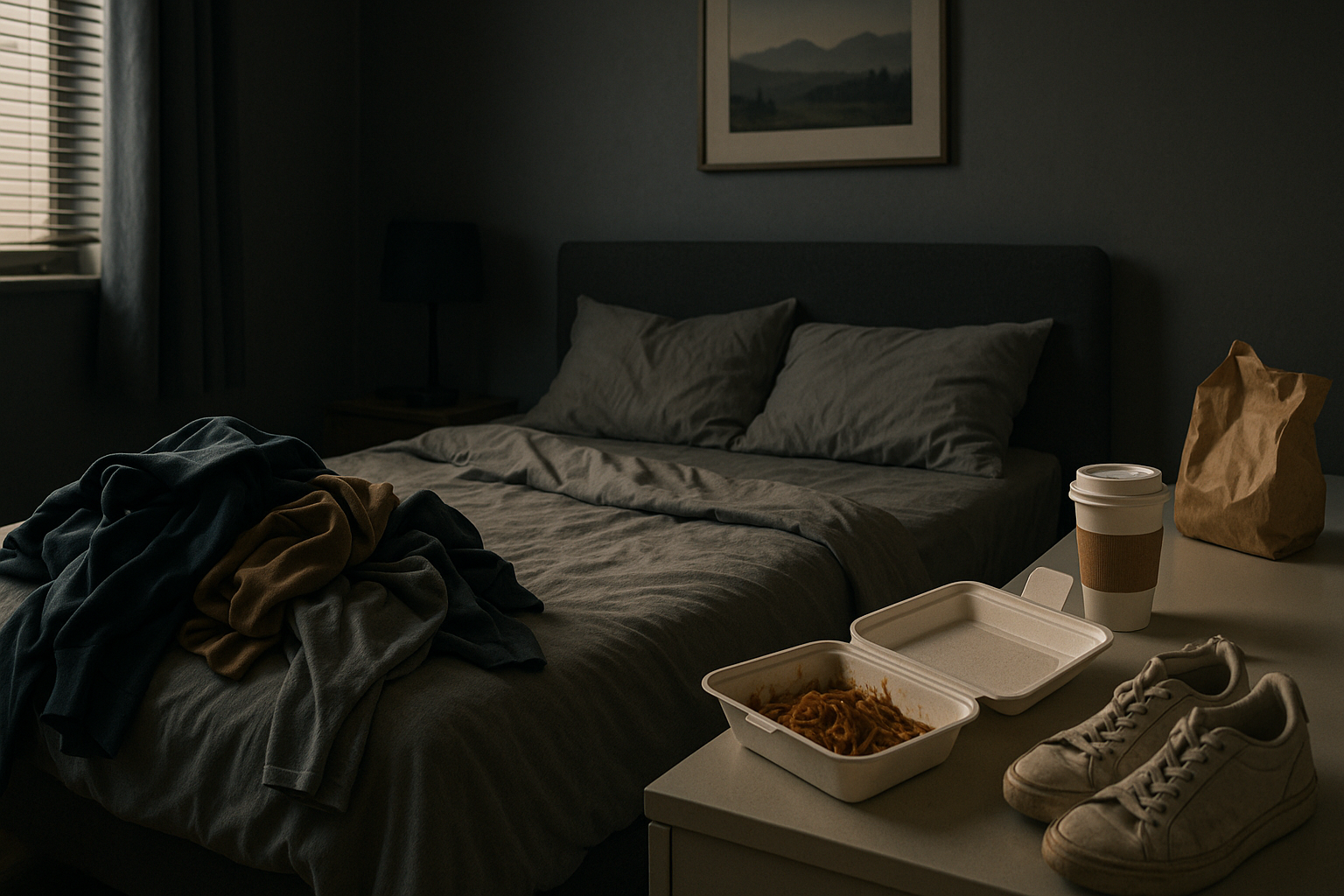

· By Jose Arteaga
Your Room Still Smells—Here’s Why (And What to Do About It)
TL;DR: If that stubborn cannabis scent keeps creeping back hours (or even days) after your session, you’re not imagining it. Lingering odors cling to porous surfaces, re-emit through poor ventilation, and reactivate with heat or humidity. Most sprays just mask the problem. Here’s the science behind why your room still smells—and how to fix it with smarter rituals, real odor neutralization, and scent layering that actually works.
The Hidden Sources of Lingering Odor
- Porous Materials: Curtains, cushions, rugs, and wood surfaces soak up terpenes and VOCs like sponges. These materials release scent over time, especially when disturbed or warmed.
- Unventilated Spaces: If your session spot has poor airflow, odors concentrate and settle into surfaces more aggressively. Hotboxing a room locks that funk in.
- Reactivation: Heat and humidity reactivate trapped molecules. Open a window on a humid day? That “last night” smell comes back swinging.
- Surface Residue: Ash, oils, and resin from your flower or rig leave micro-films on nearby surfaces. Cleaning counters with just water or all-purpose sprays won’t cut it.
Why Most Sprays Don’t Work
Air fresheners and cheap sprays just layer synthetic fragrance over odor molecules. They don’t neutralize. Worse, they often clash with cannabis terpenes, creating weird scent mashups. Modest & Co. uses enzyme-based formulas that bind to and break down odor-causing compounds like myrcene and pinene, rather than covering them up.
How to Actually Eliminate Odor
- Neutralize First: Start with 2–3 pumps of spray before your session. Enzymes get to work while you relax.
- Ventilate Strategically: Cross-ventilation (window + fan) prevents terpene concentration. Keep air moving.
- Burn Clean: Use a Modest & Co. candle 10–15 minutes before lighting up. The soy wax binds terpenes as they release, rather than letting them scatter.
- Post-Session Reset: Spritz surfaces (sofa, curtains, rug edges) with a fine mist. These are the hotspots. Burn a candle for 15–20 more minutes to finish the job.
DIY Hacks That Help
- Baking Soda Bomb: Open bowls of baking soda near soft surfaces absorb VOCs overnight. Swap them weekly.
- Citrus Simmer: Simmer lemon peels, rosemary, and cloves on the stove post-session to refresh the room naturally.
- Activated Charcoal: A small open container or bag near your usual spot traps odors silently.
What to Avoid
- Aerosol Sprays: They atomize fragrance, not odor control. And they stick to surfaces—making things worse.
- Ozone Machines: Sound high-tech, but they irritate lungs and aren’t safe for daily use in lived-in spaces.
- Over-spraying: Too much fragrance doesn’t mask smell—it amplifies it. Especially when it doesn’t pair well with cannabis terpenes.
Pro Tips
- Pair scents with intent: For example, use the Citrus + Neroli spray with the Woodsmoke candle to cancel dankness and add depth.
- Don’t forget fabrics: Mist blankets, throws, and decorative pillows weekly. They’re silent odor hoarders.
- Rotate rituals: Mix up your routine based on time of day and intensity of use—heavy sessions need a longer post-game.
Real-World Experiences
“I didn’t realize my blackout curtains were holding onto smoke until we sprayed them. Total game changer.” —Alicia F., Atlanta
“We used to blame the smell on our dog, but turns out it was the rug under the coffee table. A little mist every morning keeps it fresh.” —Sam + Jen, Oakland
“Honestly, I thought the sprays were just fancy perfume. But they actually kill the smell. Way better than anything we used before.” —Tanya M., Brooklyn
FAQ
- Is it pet safe? Yes. All sprays and candles are Leaping Bunny certified and free from phthalates, parabens, and synthetic dyes.
- How long do effects last? Sprays provide neutralization for 3–4 hours depending on room size and usage. Candles neutralize during burn and linger for 1–2 hours after.
- Do I need both spray and candle? Not always—but using both creates scent layers and deeper neutralization, especially in enclosed spaces.
Scientific Footnote
Results based on SPME-GC analysis conducted by AirSense Labs, Pasadena, CA. Testing variables: five residential homes, 45–60 min cannabis sessions, soft-surface materials present, no mechanical HVAC active. Full methodology available upon request.
